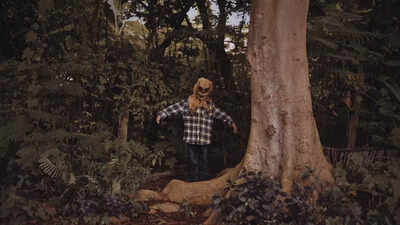ARTICLE AD BOX

Nestled deep in the remote Iya Valley on Japan’s Shikoku Island, the tiny village of Nagoro tells a haunting yet heartwarming story of loss, creativity, and resilience. This village will give you captivating travel stories, and you will be telling them for a long time.
Also known as the "Nagoro Doll Village”, this once-thriving community has dwindled to just less than 30 residents in total. However, there are over 270 life-sized dolls that populate its streets, homes, and abandoned buildings. Sounds strange right? It looks weirder. These silent figures, crafted by local resident Tsukimi Ayano, have transformed Nagoro into an eerie yet captivating tourist attraction, drawing visitors from across Japan and beyond.
These dolls are just there, existing, peering through the window, just leaning on a pole, just sat on a stool, waiting at the bus stand for a bus that will never come to take it…It’s uncanny, but there’s a story behind this strange arrangement. This village is a result of rural Japan’s struggle with depopulation. Nagoro, located along Route 439 in Tokushima Prefecture, was once home to around 300 people. Like many rural areas in Japan, it faced a steep decline as younger generations moved to cities for work, leaving behind an aging population.
By September 2019, only 27 residents remained, all seniors, with no children born in the village for over two decades. The local elementary school closed way back in 2012 when its last two students graduated.

Tsukimi Ayano, now in her mid-70s, returned to Nagoro in the early 2000s to care for her aging father. Faced with a village that felt like a shadow of its former self, she noticed birds eating seeds in her garden and crafted a scarecrow in her father’s likeness to deter them.
Over the next two decades, Ayano created more than 400 dolls, with around 350 scattered throughout the village at any given time. Each doll, made from wooden sticks, newspapers, elastic fabrics, and knitting wool, is a labor of love.Walking through Nagoro feels strange (but strangely in a good way). Dolls sit at bus stops, fish by the river, or linger in front of abandoned shops. In the deserted school, child-sized dolls fill classrooms, posed at desks as if studying, while others swing on playground equipment or race in an imagined sports day, or undokai, a cherished Japanese tradition. Some dolls wear the clothes of the people they represent.
Others capture moments of daily life: a farmer in a field, utility workers fixing a road, or a group of “villagers” chatting under a telephone pole.The dolls have breathed new life into Nagoro, drawing tourists who marvel at the village’s quiet beauty and the striking contrast of its lifeless yet lifelike inhabitants. The surrounding Iya Valley, with its rugged mountains and scenic drives, adds to the charm. Nowadays, the small village of Nagoro gets its fair share of tourists, all curious to see a village that is literally a doll village, a village where human-size dolls outnumber actual human beings.This village, located approximately 550 kilometers southwest of Tokyo, feels like it is frozen in time. This is where straw figures represent those who once called Nagoro home.



.png)
.png)
.png)
















 1 hour ago
3
1 hour ago
3









 English (US) ·
English (US) ·